Until the 1950s it was possible to enter the golden ball of the dome of San Pietro
Between the dome and the large cross of St. Peter’s Square in the Vatican there is a golden sphere.
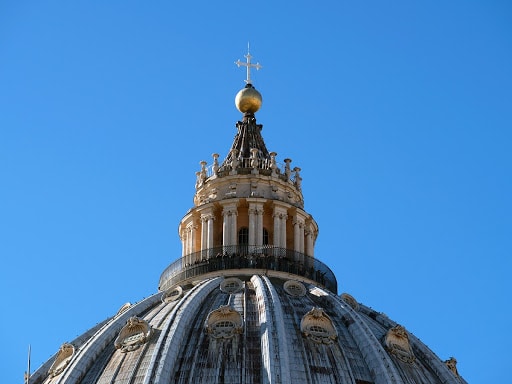
Until the 1950s it was possible for tourists and onlookers to enter that sacred ball placed, between heaven and earth, on the famous Dome of the Basilica. It seems impossible but even 20 people could enter it.
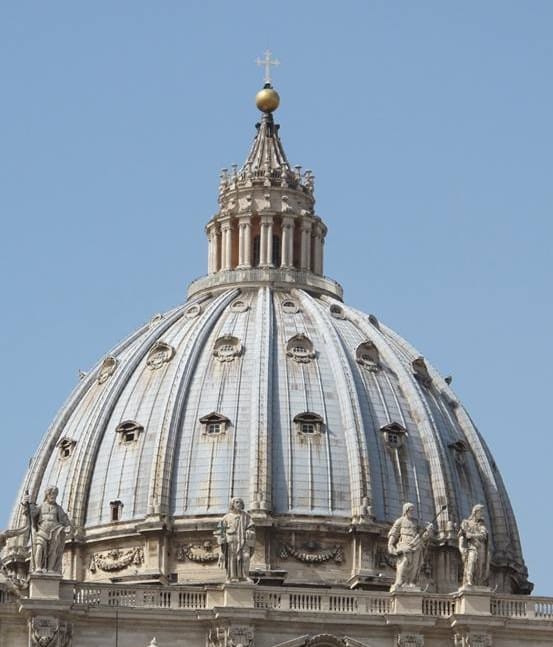
The dome ball is an empty sphere inside: it is made of bronze and is coated in gold. From a distance it looks very small, in reality it is very large. It seems incredible: in fact, up to 20 people can enter (12 comfortable). The sphere inside is hollow and up until a few years ago it was even open to visitors. In the bronze roof some cracks had been made (four, each corresponding to a cardinal point), and the panorama, from up there, with all of Rome at its feet, was truly marvelous.
You could get there from the Loggia del Lanternino with a six-meter ladder then, through a narrow passage, just 80 cm, you could pass inside the ball.
As the text of “Curious Walks in Rome” states, the French writer de Lorbac says he witnessed the ascent of a very robust German visitor who got stuck.
Hear how the American traveler William M. Gillespie, who visited Rome in 1844, described it.
“… We had to go up yet another ramp that runs around the lantern and finally we went to the top, at the foot of the stem that supports the sphere and the cross.
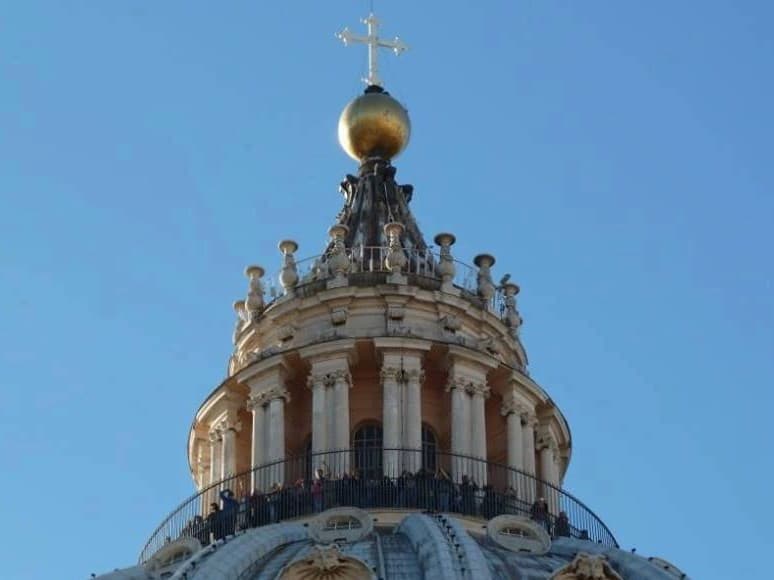
This stem is hollow and contains a ladder, perpendicular, on which we climbed and, through a narrow opening, struggled into the sphere.
It is eight feet in diameter and the guide says it can hold sixteen people. A prudent person would not really want to be part of the sixteen, since, with only two friends besides me, the sphere seemed to swing back and forth and give way with every gust of wind. Instinctively we feared that the thin copper plate of which it is made could break or that our weight could make it sway and fall from the superb height, and then bounce off the lantern on the dome of the roof, until it crashed to the ground with its precious contents, to four hundred and thirty feet from the point of departure. We didn’t stay there long… “.
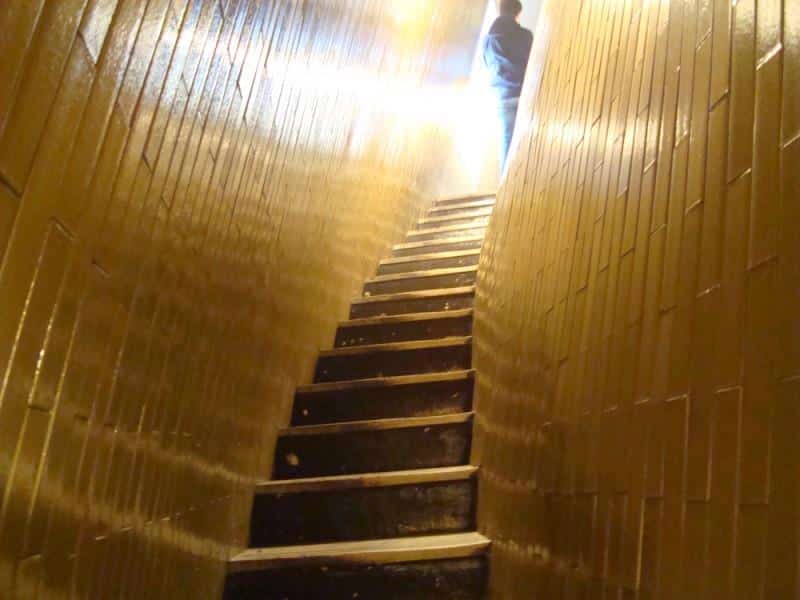
The sphere is made up of fifty bronze plates of different sizes and laminated in gold (the gold lamination was discovered in 2005 by the “sanpietrini”, the custodians of the basilica, on the occasion of the first, historic “washing”, during the maintenance work and polishing). It was placed up there in 1593, by the will of Pope Clement VIII, by Giacomo della Porta, who had been entrusted with the task of completing the dome designed by Michelangelo over thirty years earlier and remained unfinished after the death of the great master. The names of the Ticino architect and his son Paolo, engraved in Latin, came to light on the occasion of that first cleaning.
The vaticanist Silvio Negro describes it in this way in “Vatican minor”, a work that in 1936 earned him the “Bagutta Prize”: “Whoever gets there is in a warm and unexpectedly humid atmosphere, in a round room two meters in diameter , marked all around by cracks that allow you to have a peek at the panorama even from up there ». These slits are four in total and each open at a cardinal point.
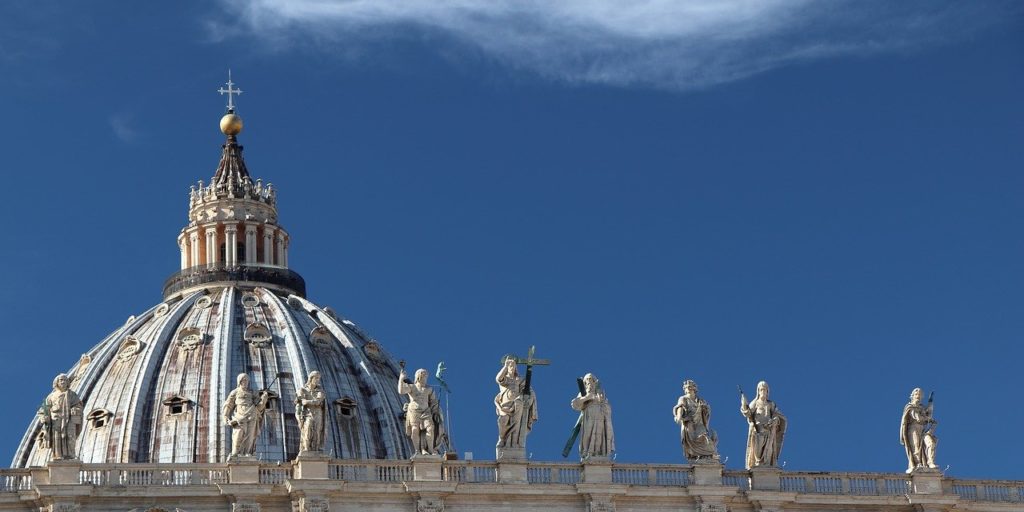
In 1845 Gregory XVI even offered refreshments for the Russian Tsar Nicholas.
The last pope to go up there was Pius IX in 1847, on the evening of the eve of the solemnity of Saints Peter and Paul (as well as patrons of the city of Rome) almost exactly one year after his election and coronation.
For safety reasons, the large sphere, which holds the cross, cannot be visited since the mid-1950s, because it would have created problems of instability in the dome.
